‘Roma’s’ Alfonso Cuarón shows us the Mexico City streets that shaped his Oscar-nominated film
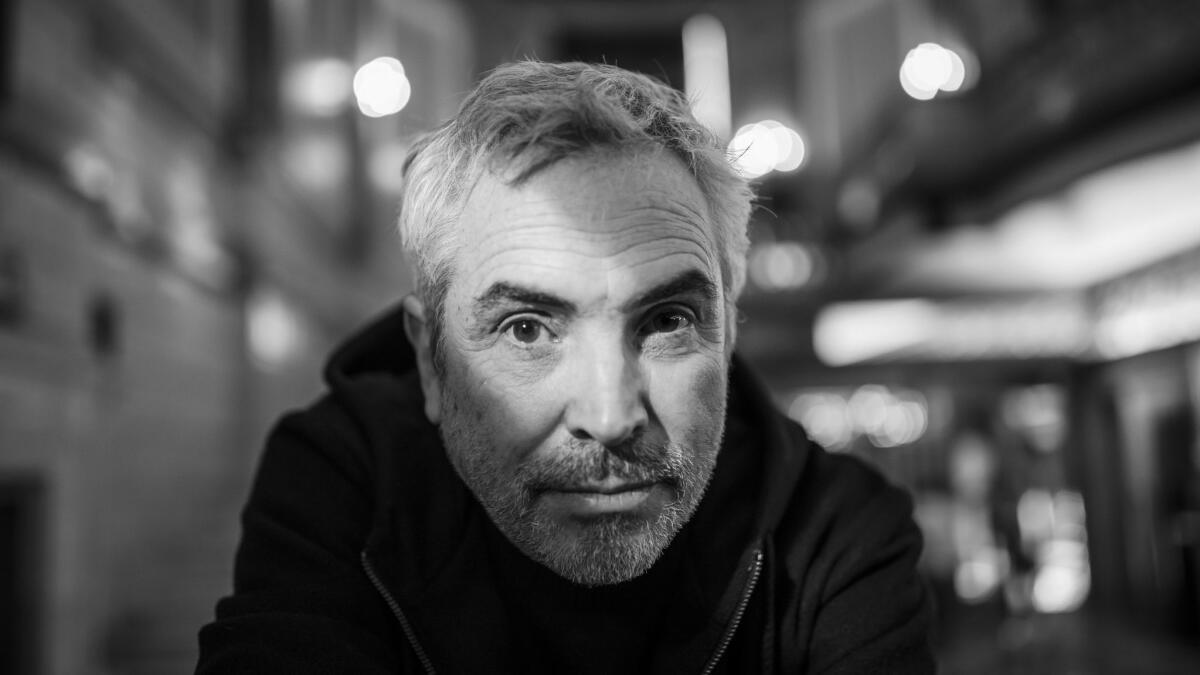
Reporting from Mexico City — When the Cine Metropolitan opened on Avenida Independencia in Mexico City in 1943, it was one of those spare-no-expense architectural extravaganzas that reveal why movie theaters were once referred to as “palaces.” The broad Art Deco facade featured an illuminated marquee topped by a city skyline. The interiors channeled 18th century France, with a marble-lined foyer and grand staircase inspired, in part, by the chapel at Versailles. It was a building that was all crisp Modernism on the outside, buttery ancien régime within.
By the time Alfonso Cuarón started seeing movies there in the 1970s, the Metropolitan had lost some of its luster. Like many movie palaces of the early 20th century, it had evolved into a working-class movie house where you could go see a slightly out-of-date thriller for cheap.
The Cine Metropolitan has since become the Teatro Metropolitan, a live music venue. But it is nonetheless a place that the Mexican film director has returned to over the course of his career. It was at this theater that he held the Mexican premiere of his 2001 film “Y Tu Mamá También,” the coming-of-age road picture that put him on the international cinematic map. Fifteen years later, he returned to shoot key scenes for “Roma,” the family drama inspired by his own upbringing that has earned him several Golden Globe nominations and a heap of Oscars buzz.
And on this cool December morning, Cuarón stands once more before the Metropolitan, hair tousled, clutching a warm cup of tea. He recalls a trip to the theater as a youth to see “The Poseidon Explosion,” a 1973 film whose principal claim to fame was a title that was easily confused with “The Poseidon Adventure,” the hit U.S. disaster flick from the previous year.
“It ended up being a Romanian film about a boat called Poseidon,” he says with a shrug. “I remember I got bored.”
Cuarón steps briskly into the auditorium. “Come inside,” he says. “Inside is where we shot some scenes.”
The stage is framed by a set of Neoclassical columns whose capitals were once daubed with 23-karat gold.
“Cinemas were like this,” he says reverently. “When I was a kid I would love to arrive 10 to 15 minutes before the beginning of the movie to see the curtain opening slowly and the expectation of what you are going to see next.”
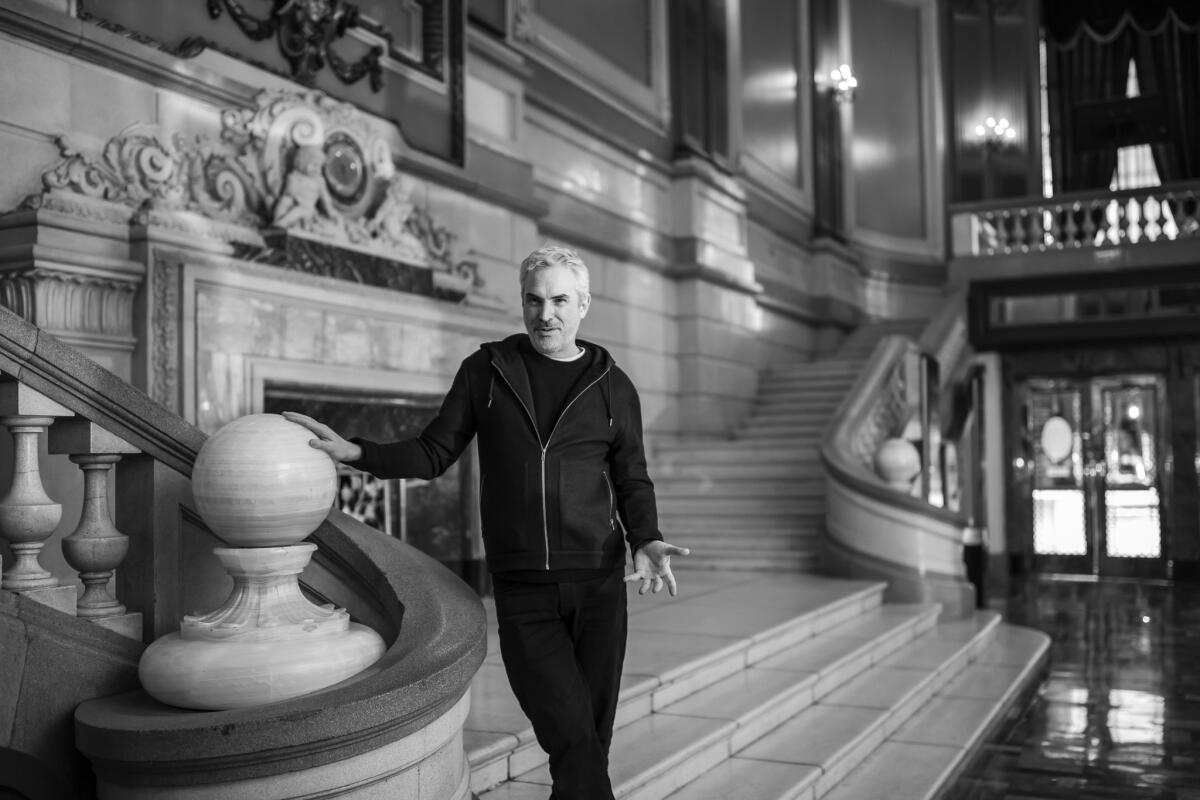
The Metropolitan has played a significant role not only in Cuarón’s life, but in the life of his lead character in “Roma.”
It is at this theater that Cleo, a young indigenous woman working for a family in Mexico City, experiences a sequence of fateful moments. It is a place of intimacy where she and her lover steal kisses in the back row as a group of fugitive comedians evade clumsy Nazis on screen. It is also a place of uncertainty, where, sitting by herself, she watches the credits roll as she hopes that her lover will return in the wake of difficult news.
Cuarón points at rows of seats and the proscenium in the distance. “We were here and we shot here,” he says, depositing himself into a seat. “But we had to change to 1970s seats — these are modern seats.”
If “Roma” is a story of family in all of its complicated manifestations, it is also the story of Mexico City in the 1970s — specifically, Colonia Roma, the neighborhood that Cuarón inhabited as a youth, a world away from today’s Roma, subject of breathless food stories and Mexico-is-the-new-Berlin articles about the art scene.
The ’70s were a different time and a different place.
Roma was one of those early 20th century neighborhoods that aspired to the European — in the words of historian Enrique De Anda, an attempt “to make of Mexico, the Vienna or Paris of the Americas.” The northern half was grander, in a late 19th century, Beaux Arts way. The southern half, Roma Sur, where Cuarón’s family lived, was more Modern and residential. By the ’70s, the neighborhood was fraying in parts, referred to in jest as “Colonia Roña,” remembers the director. “It’s like a scab.”
Roma was comfortably middle class — but a world away from the wealthy residential power centers of Polanco and El Pedregal to the east.
For Mexico, it was a difficult era generally, a time when the system of one-party rule by the Institutional Revolutionary Party (known as the PRI) was at its repressive peak. Following the government massacre of an untold number of student protesters at Tlatelolco in 1968 — the time frame of “Roma,” which takes place in 1970 and ’71 — was a forbidding political period.
“It was very claustrophobic,” says Cuarón of the era. “Even as a child — and I had an idyllic childhood, I was living in a middle-class bubble — it was a feeling of fear.”
In one scene in “Roma,” the boys in the family casually discuss an incident in which a soldier casually shot a boy who threw a water balloon at a military jeep. Later in the movie, Cuarón weaves in the story of El Halconazo, a massacre of student protesters by paramilitaries during the feast of Corpus Christi in 1971.
It was a time when even culture was suspect — especially rock music. Avándaro, a Woodstock-style concert held at a racetrack on the outskirts of Mexico City in September of 1971 was described as “sexual degeneracy, filth, hair and blood” in one media dispatch.
“It was debauchery! Debauchery going on!” says Cuarón, mocking the hysterical tone of the news coverage. “They felt that all of these young people together was dangerous.”
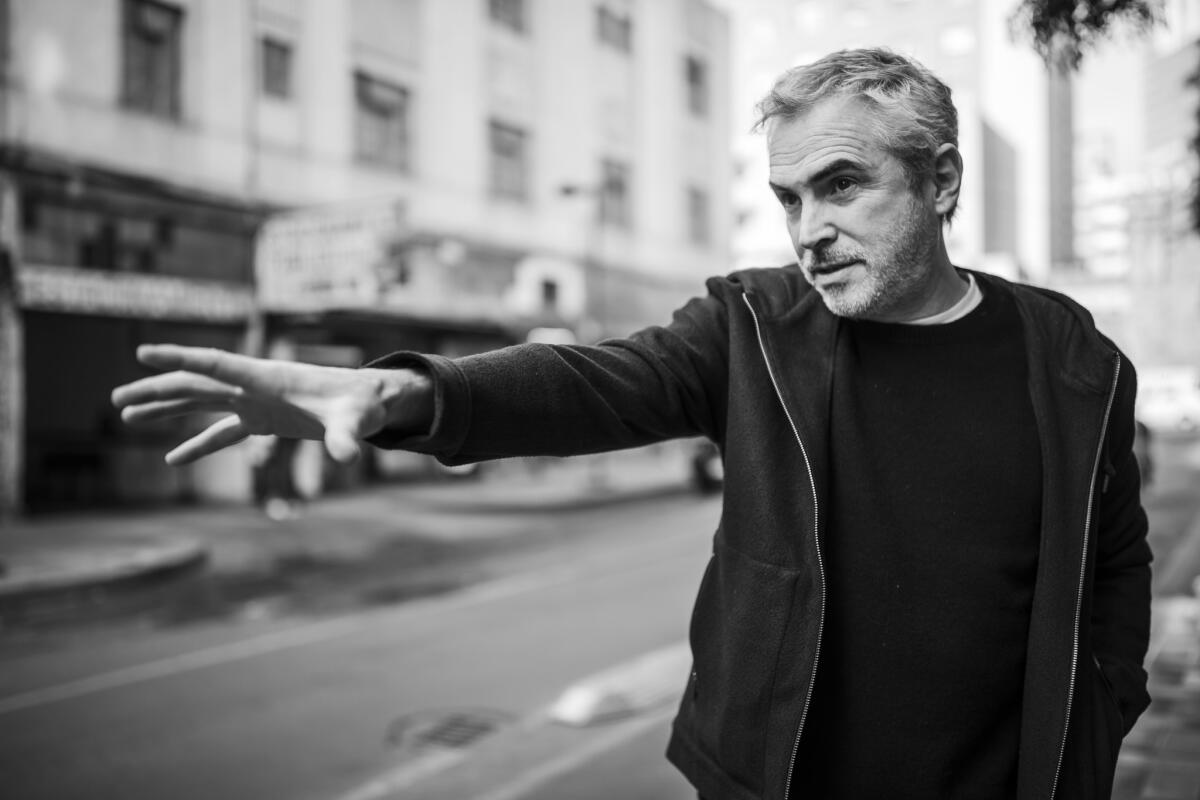
The marching orders at the beginning was that everything was going to be shot in the place where the actions took place. Then reality hit.
— Alfonso Cuaron
For the director, film provided a vital escape.
When he was a teenager, Cuarón made it a mission to a watch a movie in every Mexico City movie theater. There was Cine Estadio, at the corner of Avenida Yucatán and Calle Coahuila, with its buoyant Modernist sign and a going rate of 4 pesos for a double feature. A few blocks away, on Campeche, beckoned the old Cine Gloria, with its bright sign and its threadbare seats.
Farther north was El Cine México on Avenida Cuauhtémoc, where in the mid-1970s he and a friend turned up for a screening of “Más Negro que la Noche” (“Blacker Than Night”), a low-budget Mexican horror movie involving several doomed hotties and a possessed black cat. Cuarón never got to see the end of the picture. About two-thirds of the way through, the friend produced an actual black cat from his backpack and released it from his balcony seat into the theater below.
“It was amazing the amount of shouting going on,” Cuarón recalls with a laugh. “I didn’t go to the movies with that guy again!”
Cuarón can’t be entirely sure if he made it to every last theater in the Mexican capital — “I think I achieved it,” he says confidently. If not, his obsessive devotion to the movies brought him awfully close.
Film also serves as an escape hatch from realities both political and domestic in “Roma.”
In one scene, the family heads to the cinema to watch John Sturges’ 1969 space thriller “Marooned.” In another, Cleo nestles in with her love interest before “La Grande Vardouille,” French director Gérard Oury’s 1966 comedic escape caper — a film about escape for characters seeking their own.
Making “Roma” required Cuarón not only to reconstruct the physical Mexico of the ’70s, but it compelled him to reconstruct social and political circumstances that, as a white, middle-class man, he’d been privileged to ignore: the physical isolation of serving as live-in help, the round-the-clock schedule, the classism and racism, the grief a woman quietly holds in a world where los patrones always come first.
If Mexico was a place plagued by a sense of isolation and repression in the 1970s, the conditions for a character like Cleo were magnified. (The character, played by Yalitza Aparicio, is based on the director’s real-life nanny, Liboria Rodriguez, an indigenous woman of Mixtec origin who lived with the family from the time Cuarón was an infant.) Cleo’s world, to a large degree, is confined to the four walls of the house she inhabits and maintains — but of which she is not fully a part.
“The house is pretty much a character,” Cuarón says. “It’s a house that is pretty big, but still a bit claustrophobic. … You have the parakeets that are in a cage, you have a dog that longs to get out. The house is always containing everything.”
The house is based on Cuarón’s own home as a boy: a Modern 1930s structure that bears elements of Art Deco but also of Latin American colonial design: namely, an impassive, almost unwelcome facade that conceals a pleasant dwelling and interior courtyard within.
It’s a design that functions as a microcosm of Mexican society: “You have the spaces that are defined by hierarchy, class,” Cuarón says.
You have the parakeets that are in a cage, you have a dog that longs to get out. The house is always containing everything.
— Alfonso Cuaron
The family’s dwelling is roomy and dappled with light; the narrow spots allotted to the housekeepers are not. The family’s living room is graced by a wide, curving staircase; the steps that Cleo takes to the roof do the laundry (by hand) are rickety metal. The children inhabit their own spacious bedrooms; Cleo and her fellow housekeeper, Adela, share a tiny cell off the patio, which also harbors ironing and laundry. If the family’s spaces channel a certain middle-class, intellectual aspiration toward modernity, the staff’s quarters evoke the feudal.
Moreover, the home’s principal spaces are ones that Cleo occupies only furtively.
“She’s always silent except in the kitchen or in her room,” Cuarón says. “She is silent except for si, no, yes. Then she goes into the kitchen and she talks and she’s a person.”
The one space that housekeeper and family do share is the internal patio. In “Roma,” that space is also the place to which the family relegates the dog and into which their absentee dad wedges his oversize Ford Galaxy.
“It’s our social spaces,” says Cuarón. “Our social spaces, they’re supposed to be common ground, but who really takes care of them?”
Cuarón was determined to shoot “Roma” not on sets but in real-deal architecture from the era so that the feel of Mexico City — of Colonia Roma — could imbue every frame.
“The marching orders at the beginning was that everything was going to be shot in the place where the actions took place,” he explains enthusiastically.
“Then reality hit.” He sighs.
The interiors of the house he grew up in had been remodeled beyond recognition, so he settled for a similar home in a nearby colonia. The exteriors, however, he shot on the same block his family inhabited in the 1970s: Calle Tepeji has changed little in the intervening decades. It is still solidly middle class. And it is still lined with the Midcentury Modern and Art Deco homes that were popular in Mexico in the post-Revolution era — designs that served as symbols of progress and enlightenment.
On a late morning, after my interview with Cuarón, I pay a visit to the street. The windows at No. 21, where the director lived as a boy, are open. A housekeeper is mopping the floors.
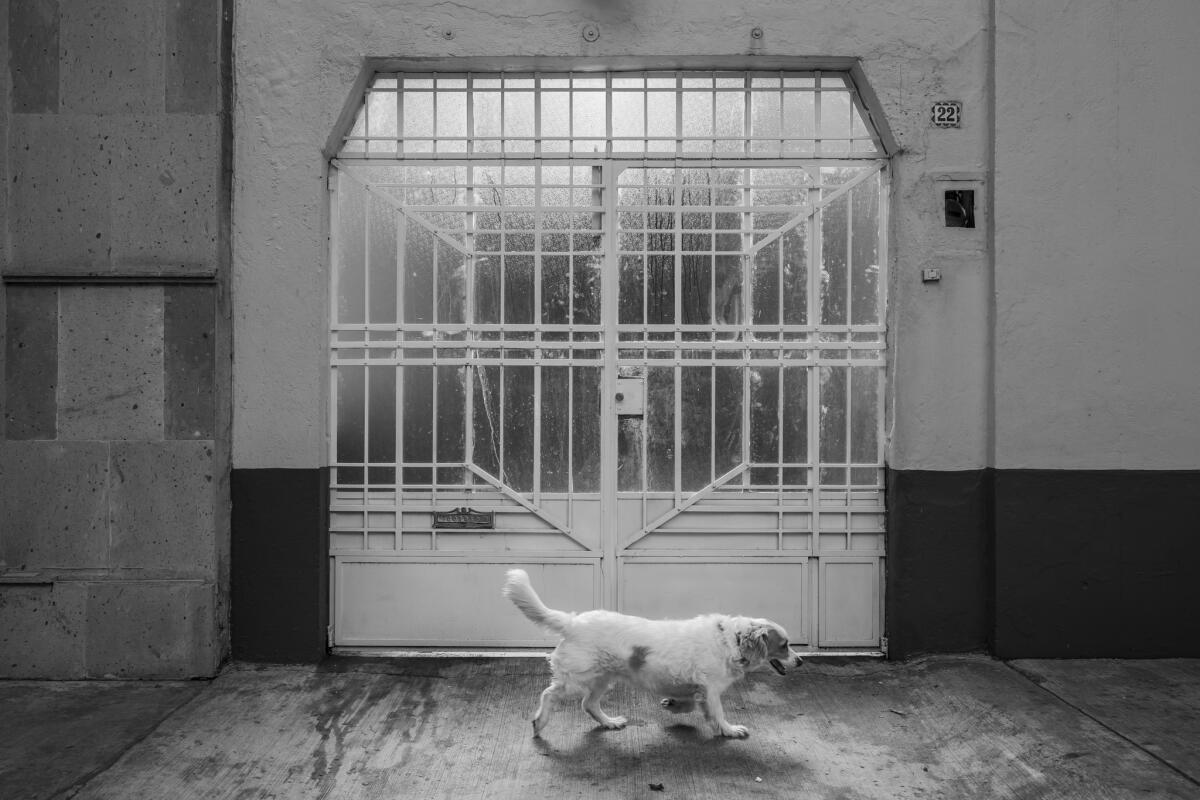
Throughout “Roma,” Cuarón employs architecture in symbolic ways.
There is a pan of the gritty rooftop where Cleo spends hours doing laundry, a world away from the family’s comfortable quarters just below. On a visit to a hacienda owned by friends of the family she works for, Cleo descends a staircase — in a scene worthy of famed Mexican cinematographer Gabriel Figueroa — that leads from the world of los patrones (the owners) to a hidden party for the workers below.
When Señora Sofía (played by Marina de Tavira) drives Cleo to a doctor’s appointment at the medical center in Mexico City, the camera comes to rest on a broad bas relief created by esteemed Mexican artist José Chávez Morado in 1958. The piece (which still stands) is a study of Mexican medicine through the ages, with a pair of panels, at left, that celebrate indigenous medicine. The venerative treatment outside could not be more at odds with the reality inside: a hospital where working-class (and, therefore, largely indigenous) women endure the pains of labor in chilly, cavernous rooms.
It is architecture that speaks to what Cuarón sees as the hypocrisies of the country’s political leaders.
“There was a constant bombardment of ideology, the nacionalismo revolucionario [revolutionary nationalism] of the PRI with these ideas about what mexicanismo was,” he recalls. “It’s a pride about our indigenous roots, but the indigenous community is completely ignored and marginalized.”
We step out of the Metropolitan into the hazy Mexico City daylight. Cuarón is, these days, highly recognizable in Mexico City — his face materializing on television talk shows and on magazine covers on newsstands. An elderly gentleman approaches with hand extended. “Un orgullo para México,” he says. “The pride of Mexico.”
As we walk down Avenida Independencia to his waiting car, Cuarón makes it clear that “Roma,” ultimately, isn’t just about symbols. It is profoundly personal. “I’m talking,” he says, “about one of the humans or one of the people that I love the most.”
He refers to Libo, the nickname he employs for Rodriguez, the woman who raised him, whose life served as the basis for Cleo’s story, and to whom he dedicates his film.
“It was a whole reconsideration,” Cuarón says. “Not only seeing all of these layers of her, but, inevitably, the immense pain that it gave me that I had never stopped to consider those things — and in someone that I love.”
Years of “endless conversations” with Rodriguez led to “Roma,” says Cuarón, conversations in which they covered subjects both life-changing and mundane — like what she did with her Sundays off, the one day a week that belonged entirely to her.
On most weekends, that day would consist of a sandwich with friends, a visit to the park and a jaunt to the Metropolitan for a movie.
“I would ask her, ‘Which kind of movies?’ ” recalls Cuarón. “And she would say, ‘Whatever was playing.’ ”
In the darkened hall of the Cine Metropolitan, as the curtain came up over the screen, she too found her escape.
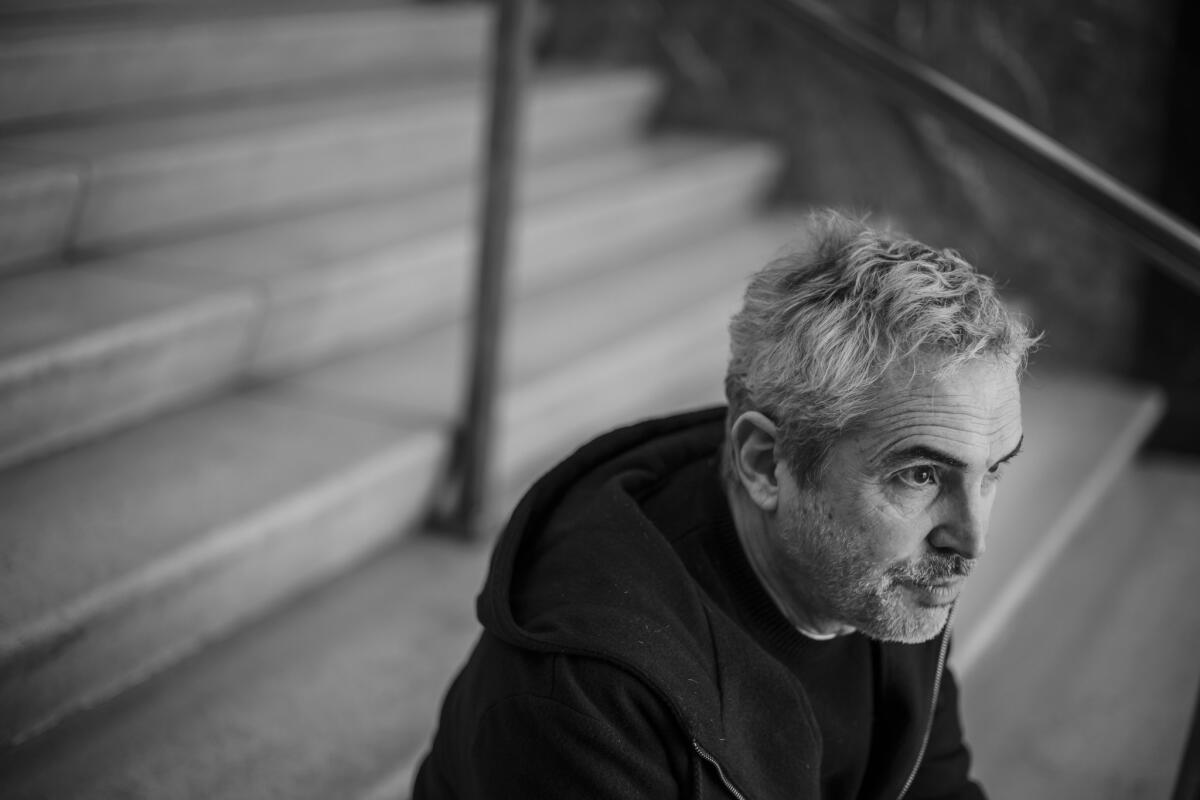
Sign up for our weekly Essential Arts & Culture newsletter »
ALSO:
Alfonso Cuarón delves into his childhood for ‘Roma’ and already talk turns to Oscars
The film ‘Roma’ stirs audience in director’s hometown, Mexico City
Let ‘Roma’ start a conversation about the household workers we employ
Mexico City’s art scene is booming, but even with deep roots, political uncertainty keeps it fragile
Why so many Mexicans revile the Colonial Californiano architectural hybrid that spread from SoCal
[email protected] | Twitter: @cmonstah
More to Read
The biggest entertainment stories
Get our big stories about Hollywood, film, television, music, arts, culture and more right in your inbox as soon as they publish.
You may occasionally receive promotional content from the Los Angeles Times.











